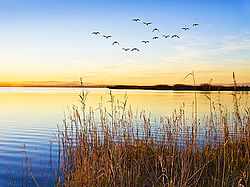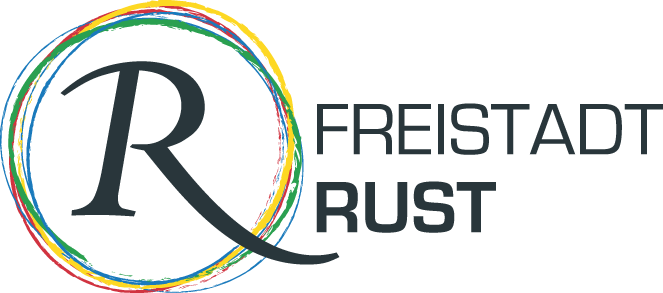Lake Neusiedl
Every spring, more than 30 white storks land in Rust on Lake Neusiedl to spend the summer in the midst of the model town of historic preservation and to bring a new generation into the world. In the summer months, up to 80 storks circle above Austria’s smallest town with just under 1,900 inhabitants and its own town charter. Nestled between the vineyards of the Rust hill country and Lake Neusiedl, the historic town center of the “town of storks and fine wine”, a picturesque ensemble of lovingly maintained town houses from the 16th to 19th centuries, shines. Protected by the “Hague Convention” and voted the most beautiful town in Burgenland several times, Rust was named a “Model Town of Monument Protection” alongside Krems and Salzburg in 1975, the “Year of European Architectural Heritage.
A number of distinctive buildings such as the three churches, the old town hall, the Seehof, the Pulverturm or the old gatehouse give the townscape its unmistakable flair, as do the numerous stork nests on the chimneys of the houses.
This atmosphere was one of the reasons why Rust and its surroundings became the setting for the television series “The Vintner King”. Lake Neusiedl was probably another. As the largest steppe lake in Europe, it not only influences Rust’s viticulture in a very special way, but also offers the Free City of Rust and its visitors a wide range of sports and leisure opportunities.

Flora and fauna
The “royal free city” of Rust – the city of storks and good wines – borders Lake Neusiedl to the east and the Rust Hills to the west. The core of the Rust hill country consists of crystalline bedrock surrounded by Leithakalk, limestone and unconsolidated sediments. On the slopes of the Ruster Hügelland there are still some traditional pastures, which are home to a diverse flora and fauna with species on the “Red List” (European Red List of Globally Threatened Animals and Plants – ECE) such as Adonis rose, Great and Black meadowfoam and Dwarf Iris.
The diversity and highly structured vegetation provide perfect habitat for praying mantis, butterflies, green lizard, sand lizard, and hoopoe.
The adjacent Lake Neusiedl to the east, with its reed belt up to 5 km wide and the adjacent wet meadows, was formed about 20,000 years ago by tectonic fractures and shifts. This area is mainly home to a diverse fauna such as small crayfish, fish (tench, roach, wild carp, pike, pikeperch or weather loach), water snails, frogs, fire-bellied toads, water shrews, muskrats, great egrets, purple and gray herons, spoonbills, pond warblers and great reed warblers, bitterns, great crested grebes and little grebes, pochards, coots, gray goose and marsh harriers.
And the white stork, so characteristic of the “royal free city” of Rust, also takes advantage of the rich food supply on the wet meadows. Cattle graze on the wet meadows to ensure their preservation – this also prevents the reeds from encroaching on the wet meadow areas. The forests have been reduced to small groups of trees due to the intensification of viticulture. In 1996, Rust decided to reforest the former forest areas. In cooperation with the Province of Burgenland and the Federal Research Institute for Forests and Forestry (FBVA) in Vienna, the vineyards were cleared and planted with English oaks, elms, hornbeams, acorns, large-leaved lime trees, wild fruit trees, serviceberries, cornelian cherries, hornbeams, hawthorns, sloes and privet.

